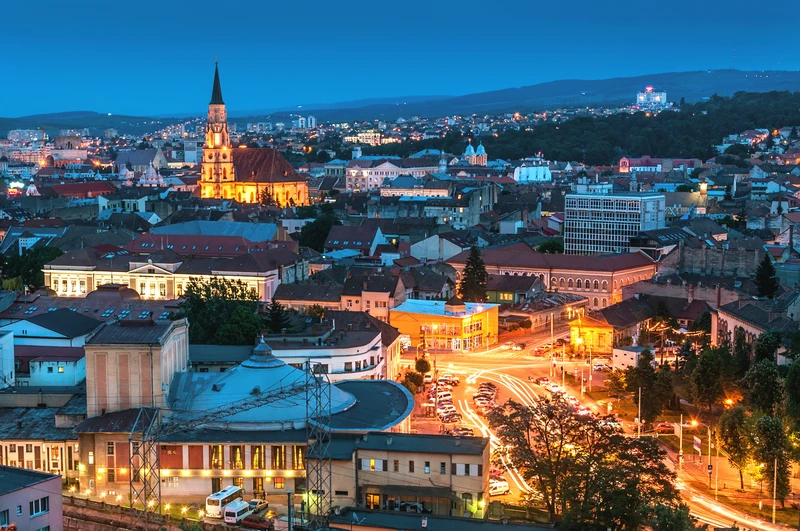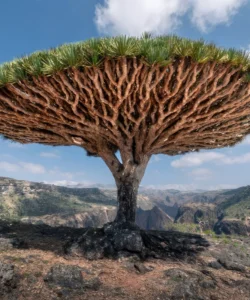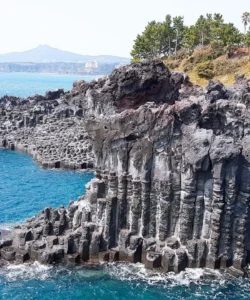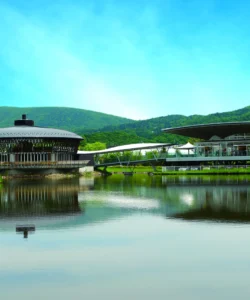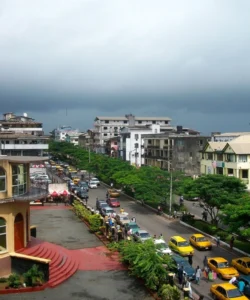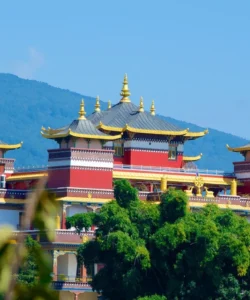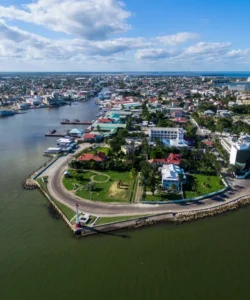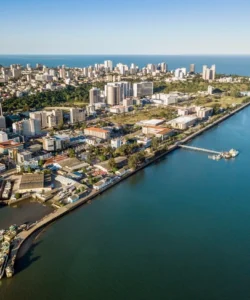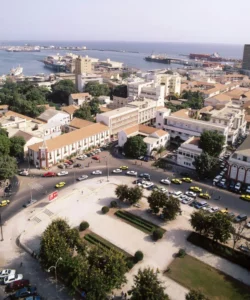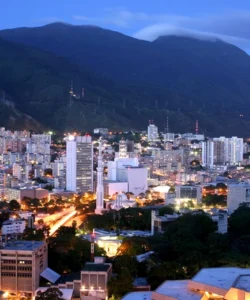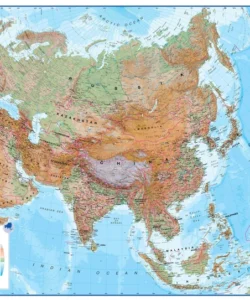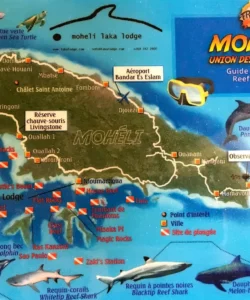Romania, officially Romania, is a country located at the crossroads of Central, Eastern, and Southeastern Europe. It borders Bulgaria to the south, Ukraine to the north, Hungary to the west, Serbia to the southwest, and Moldova to the east. To the southeast, it has a coastline on the Black Sea. Romania is known for its diverse landscapes, including the Carpathian Mountains (home to Transylvania), the Black Sea coast, and the Danube Delta, as well as its rich history, medieval castles, vibrant folk traditions, and unique blend of Latin and Eastern European influences.
![]()
Area: Approximately 238,397 square kilometers (92,046 sq mi).
Population: As of 2023, the population is estimated at around 19.1 million.
Language: The official language is Romanian, a Romance language, making it distinct from its Slavic and Hungarian neighbors. Hungarian is also spoken by a significant minority, particularly in Transylvania. English is increasingly understood, especially by younger generations and in urban and tourist areas. French and German are also spoken by some, especially older generations or in specific regions (like Transylvania for German).
Currency: The official currency is the Romanian Leu (RON). While a member of the European Union, Romania has not yet adopted the Euro.
Religion: The predominant religion in Romania is Eastern Orthodoxy, with the vast majority of the population belonging to the Romanian Orthodox Church. There are also significant communities of Roman Catholics (primarily Hungarians), Protestants, Greek Catholics, and Muslims.
Capital: Bucharest is the capital and largest city of Romania. It is a bustling metropolis known for its eclectic architecture, wide boulevards, vibrant nightlife, and the colossal Palace of the Parliament.
Major Cities: Besides Bucharest, other significant cities include Cluj-Napoca, Timișoara, Iași, Constanța, Craiova, Brașov, and Sibiu.
Attractions & Wonders: Romania offers a rich tapestry of attractions, from legendary castles and charming medieval towns to dramatic mountains and the unique Danube Delta:
- Castles of Transylvania:
- Bran Castle: Often associated with Dracula (though its connection to Vlad the Impaler is tenuous), this picturesque medieval castle is one of Romania’s most iconic landmarks.
- Peleș Castle: A stunning Neo-Renaissance castle near Sinaia, once a royal summer residence, considered one of the most beautiful castles in Europe.
- Corvin Castle (Castelul Corvinilor): A magnificent Gothic-Renaissance castle in Hunedoara, one of the largest in Europe.
- Bucharest:
- Palace of the Parliament (Palatul Parlamentului): The world’s heaviest building and the second-largest administrative building, a colossal structure from the communist era.
- Old Town (Centrul Vechi): A lively area with cobbled streets, historic buildings, cafes, restaurants, and vibrant nightlife.
- Village Museum (Muzeul Satului Dimitrie Gusti): An open-air museum showcasing traditional Romanian village life and architecture from various regions.
- Therme Bucharest: One of the largest thermal wellness and entertainment centers in Europe.
- Medieval Transylvanian Cities:
- Brașov: A picturesque city nestled in the Carpathian Mountains, with a charming Old Town, the Black Church, and proximity to Bran Castle.
- Sibiu: A European Capital of Culture, known for its well-preserved medieval architecture, grand squares, and “eyes” on its roofs.
- Sighișoara: A UNESCO World Heritage site, one of the last inhabited medieval citadels in Europe, also the birthplace of Vlad the Impaler.
- Painted Monasteries of Bucovina: A UNESCO World Heritage site in northeastern Romania, featuring uniquely frescoed medieval churches with vibrant exterior and interior paintings depicting religious scenes.
- Danube Delta: A UNESCO World Heritage site, Europe’s second-largest river delta, a vast wetland ecosystem and a paradise for birdwatchers and nature lovers.
- Transfăgărășan Road: A spectacular mountain road crossing the Carpathian Mountains, known for its dramatic hairpin bends and breathtaking scenery (open seasonally).
- Carpathian Mountains: Offer extensive opportunities for hiking, skiing, and wildlife spotting (including brown bears).
- Salina Turda: A unique salt mine near Cluj-Napoca, transformed into an underground amusement park and wellness center.
Architecture: Romanian architecture is a fascinating blend of historical styles, reflecting various empires and cultural influences:
- Romanian Brâncovenesc Style: A unique blend of Renaissance, Ottoman, and Byzantine influences, characterized by intricate stone carvings, frescoes, and loggias, particularly seen in monasteries and palaces from the 17th-18th centuries.
- Gothic, Renaissance, and Baroque: Evident in the castles and churches of Transylvania, influenced by Saxon and Hungarian traditions.
- Ottoman: Visible in some older parts of towns and mosques, especially in the south.
- Romanian Revival: Late 19th and early 20th century, seeking to re-establish a national architectural style based on traditional forms.
- Art Nouveau: Beautiful examples in Bucharest and other major cities.
- Communist Era (Socialist Realism & Modernism): Characterized by large, often monumental and utilitarian structures, particularly in Bucharest (e.g., Palace of the Parliament, wide boulevards).
- Contemporary: Modern Romanian architecture is diverse, with new commercial and residential developments, often blending contemporary designs with historical context.
Roads: Romania’s road network has been undergoing significant improvements. Major highways (A-roads) and expressways (DNs) are connecting key cities, but some parts are still under development. While the main routes are generally adequate, secondary and rural roads can vary significantly in quality, with some being poorly maintained or unpaved. Traffic can be heavy in and around major cities. A road vignette (rovinietă) is required for most roads.
Hotels: Romania offers a wide range of accommodation options. In major cities like Bucharest, Cluj-Napoca, and Brașov, you’ll find international hotel chains, boutique hotels, and budget-friendly hostels and apartments. In tourist regions like the Black Sea coast and mountain resorts, there are numerous hotels, guesthouses (pensiuni), traditional inns, and ski chalets. Agritourism and traditional village stays are also popular for an authentic experience.
Restaurants: Romanian cuisine is hearty, flavorful, and diverse, with strong influences from Balkan, Ottoman, Hungarian, and Slavic culinary traditions. It features meat (pork, beef, chicken), vegetables, cornmeal, and rich spices.
- Bucharest offers a vibrant culinary scene, from traditional Romanian restaurants (caru’ cu bere is famous) to fine dining establishments and a wide array of international cuisines.
- Traditional Romanian Dishes:
- Mămăligă: A staple, a thick cornmeal porridge similar to polenta, often served with sarmale, cheese (brânză), or sour cream (smântână).
- Sarmale: The national dish – cabbage rolls (or vine leaves) filled with minced meat and rice, simmered in a savory sauce, often served with mămăligă and sour cream.
- Mici (Mititei): Grilled skinless sausages made from ground meat (usually a mix of pork, beef, and lamb), very popular as street food, served with mustard.
- Ciorbă: A diverse category of sour soups, often made with various meats (beef, chicken, tripe – ciorbă de burtă), vegetables, and soured with fermented bran (borș) or lemon juice.
- Tochitură: A hearty traditional stew made with various cuts of pork or beef, served with mămăligă and a fried egg.
- Papanasi: A popular dessert – fried or boiled doughnuts made with sweet cheese, served with sour cream and fruit jam.
- Zacuscă: A vegetable spread, often made from roasted eggplant, peppers, and onions.
- Cozonac: A sweet, rich bread (like a brioche) often filled with walnuts, poppy seeds, or cocoa, traditionally made for holidays.
- Wine: Romania has a long history of wine production, with various regions producing red, white, and sparkling wines.
- Țuică/Pálinka: Traditional plum (or other fruit) brandy, often homemade.
- Fresh cheeses (like brânză de burduf) are a delight.
